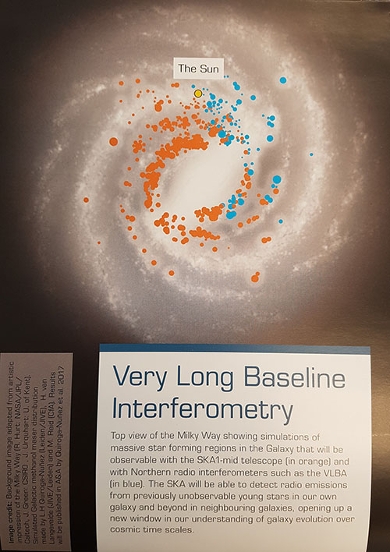
Behind the scenes on the Big Bang Theory
‘I got into Nature last year, I was nominated for a faculty teaching award and my kids don’t care. But if your simulations get on The Big Bang Theory then that’s something!’ says Huib van Langevelde.
Van Langevelde is a senior scientist at the Joint Institute for VLBI ERIC (JIVE) and Professor of Galactic Radio Astronomy at Leiden University. The simulations he refers to appear as an image on a calendar that can be found in the offices of hundreds of astrophysicists across the globe; showcasing the revolutionary research that will be conducted by the world’s largest radio telescope: the Square Kilometer Array.
The wall of Rai Koothrapalli
Now, that calendar can also be found hanging in the office of one of the most famous fictitious astrophysicists, Rajesh (Raj) Koothrapalli. He is a character in The Big Bang Theory, an American comedy series that sees the lives of five friends play out against a scientifically accurate backdrop.
Van Langevelde’s PhD student Luis Henry Quiroga Nuñez, who is also based at Leiden University and JIVE, is responsible for creating the left hand image on the December page, which can be seen in ‘The Confidence Erosion’ episode on Veronica on 9 February.

Simulations of natural microwave lasers
Van Langevelde explains: ‘Basically, the image is a prediction of what the SKA will be able to do. It shows simulations of methanol masers, which are natural microwave lasers found at radio sources where high mass stars form.’ The simulations stem from work presented in the scientific paper ‘Simulated galactic methanol maser distribution to constrain Milky Way parameters’ published in the Astronomy and Astrophysics journal as part of a project known as BeSSel (Bar and Spiral Spacial Legacy Survey). The study produced a catalogue of information on high mass stars in the Milky Way observed from the Northern hemisphere. The calendar image builds on this to demonstrate how many radio sources in the Southern hemisphere it will be possible to observe once the SKA is constructed.
Van Langevelde points out that in this image they are ‘only presenting one of the few science cases from one of the few science areas that the SKA will contribute to.’ He indicates that there are a whole host of topics that could be researched with the SKA, from the formation of galaxies in the Universe to the fundamental physics of gravitational waves.
Impact beyond the astronomy community
The SKA is an international collaboration with the tantalizing aim of solving some of the biggest questions in astronomy, and the fact that it makes an appearance on the set of The Big Bang Theory indicates that its impact is already beginning to reach beyond the astronomy community.
‘It’s in the background, so most of the people are probably not paying attention to those things, but it’s nice to know that these images are important,’ says Quiroga Nunez. While he sees it as luck that the December image happened to make an appearance, it has been a source of much amusement for his friends and family. ‘I have a friend in Australia right now doing his PhD, and he told me that he has seen my image so many times. He said ‘I didn’t realise it was your image, and I looked at the credits on my own calendar and thought: I know this guy, I studied with him!’
Similarities with own friends
Quiroga Nunez sees similarities between the characters on The Big Bang Theory and his own circle of friends from his undergraduate in physics. His wife often draws comparisons between the two groups – although, much to his dismay, she sees him as more of a Wallowitz than a Koothrapalli. ‘My wife thinks I’m the NASA guy because of the link with astronomy and my previous position as an intern at the Space Telescope and Science Institute in Baltimore, USA. The institute is operated by AURA for NASA. She thinks it’s so cool that we are in some way contributing to The Big Bang Theory.’
Both scientists appreciate the integrity that goes in to the set design of The Big Bang Theory, although they have spotted some crucial differences in the daily routines of the characters. Quiroga Nunez points out: ‘What is not quite accurate is that they spend most of the time doing fun stuff, which is of course part of the show. Actually as postdocs or junior staff what you do is spend most of the time in the office!’ Van Langevelde: ‘A lot of the themes are around scientists having a social life, but usually the problems are not with having a social life, the problem is finding the next job!’
While Quiroga Nunez and Van Langevelde contemplate the real life problems of researchers everywhere, they are happy to know that for a brief time a piece of their research adorned a wall visible to an audience of millions worldwide.
Text and images: Gina Maffey, Science Communication Officer at JIVE

